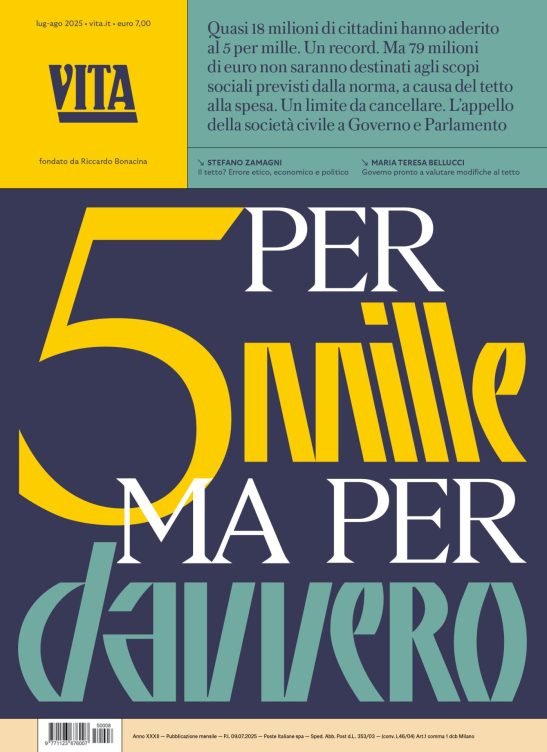Non profit
Estonia: The singing revolution
A remarkable new documentary, The Singing Revolution, tells the story of Estonia's non violent struggle against decades of Soviet occupation. And its role in building democracy
di Staff
A remarkable new documentary, The Singing Revolution, tells the little know story of the Estonian people?s non violent struggle against decades of Soviet occupation that culminated in the country?s independence in 1991. The movement played an important role in the downfall of the entire Soviet Empire.
The people of Estonia, along with their neighbours in Latvia and Lithuania, showed how sustained non violence could be successfully waged against the Soviet occupation of their country. And music was a key element of their campaign.
In Estonia, music ? primarily the country?s rich choral tradition ? embodies the essence of the nation?s cultural identity: a language totally unrelated to the Slavic and Scandinavian tounges of their neighbours and their Lutheran creed, while most of their immediate neighbours are Catholic or Orthodox.
Proletarian solidarity
A more immediate threat to their linguistic and cultural heritage was the huge number of Russian settlers who moved into the country since the Soviet re-conquest in 1944 ? to the point where these Russian settlers almost outnumbered the Estonians themselves. Despite claims of international proletarian solidarity, the 20th-century Soviet Communists were in many ways as chauvinistic in their nationalism as the czars who had occupied Estonia in the 18th and 19th centuries.
Though one of the world’s smallest countries, Estonia has one of the world’s largest repertoires of folk songs, and the Estonians have used their music as a political weapon for centuries. Songs were used as protest against German conquerors as far back as the 13th century and as an act of resistance against the occupying army of Russian czar Peter the Great in the 18th century.
?Laulupidu?: the cornerstone of resistance
Since 1869, Estonians have taken part in an annual song festival known as Laulupidu, where choirs from around the country come together for a multi-day celebration of choral music, with as many as 25,000 people singing on stage at the same time. These gatherings, which have attracted crowds of hundreds of thousands, have always been as much about the popular yearning for national self-determination as they have been about music.
Laulupidu became the cornerstone of the resistance against the Soviet occupation, when ? in addition to singing the requisite songs praising the state and the Communist Party ? the organizers defied Soviet officials by including banned nationalist songs and symbols. Despite divisions within the nationalist movement and despite violent provocations by Soviet occupation forces and pro-Soviet Russian settlers, the movement gained strength, and the public protests, nationalist displays, and other forms of nonviolent resistance escalated.
Non violent resistance
Given Estonia?s small size, armed resistance would have been completely futile: Russia was 300 times the size of Estonia, whose population was barely more than one million. The Soviet Red Army, the largest armed force in the world at that time, was more than prepared to crush any form of armed resistance. Yet it was no match for hundreds of thousands of non violent Estonians singing their way to freedom.
When this nonviolent resistance movement began in the mid-1980s, taking advantage of the limited space made possible by reforms enacted by Soviet leader Mikhail Gorbachev, the Soviets had no clue what was coming. By all conventional measures, they had things under complete control.
Western Responses
The West didn?t have a clue what was coming. Washington believed that the best way to deter the feared expansion of Soviet Communism was through NATO, the massive procurement of arms, and the threat of triggering a nuclear holocaust. For decades, the assumption was that these Soviet-imposed autocratic regimes could not be rolled back and Estonia was deemed a hopeless cause.
But the Estonians proved them wrong: through massive non cooperation, through building alternative national cultural institutions, and through their music.
The success story
The Estonians? commitment to non violence and their embrace of music not only made their independence struggle a success, it was also key in making Estonia a successful democracy. There are still ongoing political struggles in the country, particularly regarding the rights of Estonia?s large Russian minority. But the use of a nonviolent strategy in the independence struggle has led to a climate where such potentially explosive issues are addressed without the warring militias and ethnic cleansing that have characterized other countries with serious ethnic divides.
Indeed, the Estonian revolution was led not by an elite vanguard of unsmiling ideologues. It was a massive, inclusive, and democratic celebration of a nation and its culture. Those values continue to resonate to this day. The Estonians did Emma Goldman proud. They danced, and they had a revolution.
By Stephen Zunes, Professor of Politics and International Studies at the University of San Francisco.
To see the original article
www.fpif.org
To find out more in Vita Europe
Estonia: Urmo Kübar, Executive director of NENO
Cosa fa VITA?
Da 30 anni VITA è la testata di riferimento dell’innovazione sociale, dell’attivismo civico e del Terzo settore. Siamo un’impresa sociale senza scopo di lucro: raccontiamo storie, promuoviamo campagne, interpelliamo le imprese, la politica e le istituzioni per promuovere i valori dell’interesse generale e del bene comune. Se riusciamo a farlo è grazie a chi decide di sostenerci.
